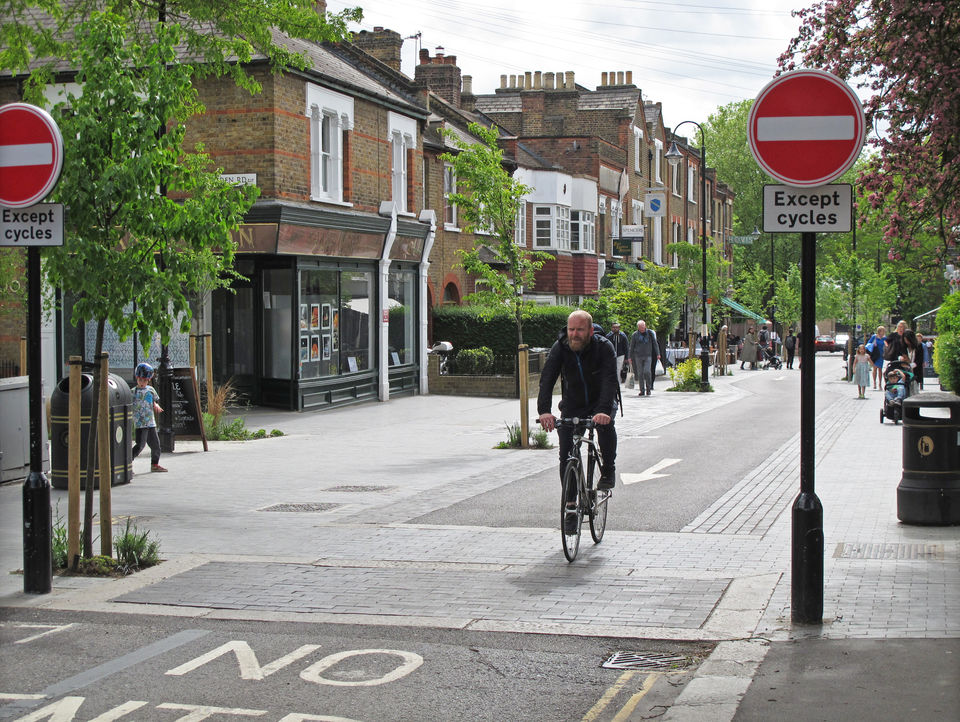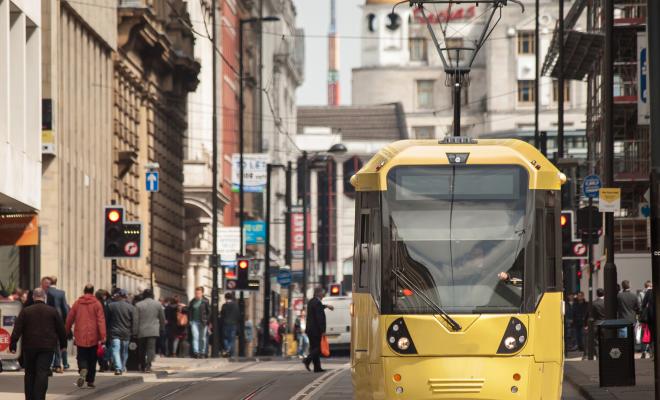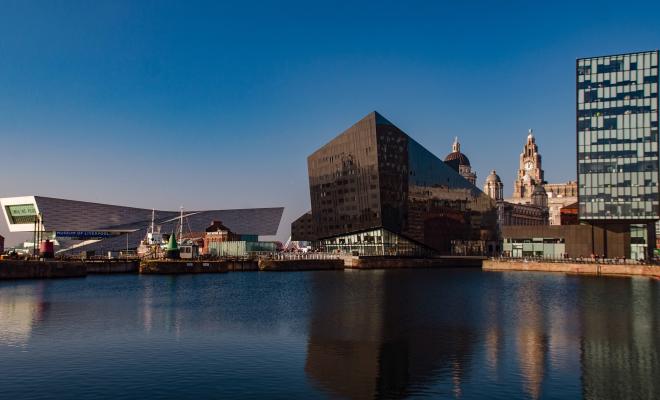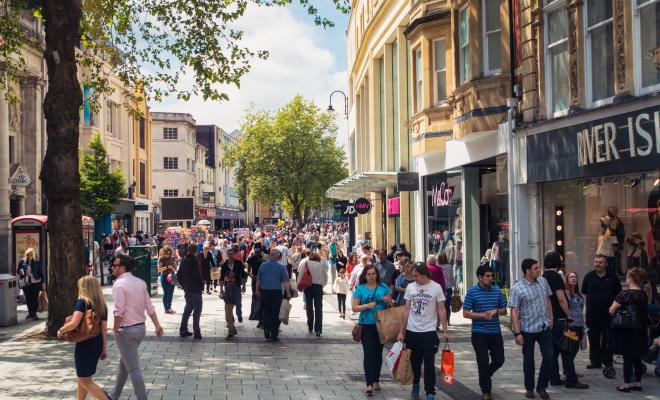23 May 2022
How is Action 3 tackling the climate crisis?
Some of the actions required to tackle climate change locally will involve people making changes to their lives, and some will be controversial. Councils need to engage residents and address their concerns if they are to successfully introduce the measures that are needed.
London Borough of Waltham Forest’s "Enjoy Waltham Forest" initiative features a wide range of measures aiming to boost walking and cycling in the area. The programme, which launched in 2014, intends to make Waltham Forest a better place to live by creating health, social and economic benefits for local people.
However, many aspects of the initiative, such as the pedestrianisation of high streets and the use of blended crossings which are designed to slow traffic and emphasise pedestrian priority, have proved contentious among residents. In order to better understand public opinion and take decisions that reflect the needs of local people, the council carried out an extensive engagement and consultation process. This invited residents to:
- take part in an initial perception survey
- feedback on concept designs
- take part in workshops with the authority
- give their views on preliminary designs
- take part in a full public consultation
- feedback on detailed designs
- input into a statutory process
- take part in a final review
The perception survey asked residents how they viewed their local area, and what new travel, safety and public realm improvements they would like to see introduced. The results showed demand to boost the attractiveness of the local area and highlighted places with the highest amounts of resident feedback overlapped with areas with the highest traffic levels.
Following this, the council produced a detailed report mapping out resident concerns and aspirations. This formed the basis for the initial concept design process.
Later, multiple in-person workshops and drop-in sessions gave people the chance to have practical discussions with the council. The in-person, participatory decision-making process centred on key exercises that were informative, inclusive and interactive.
First, residents mapped out where they walked and cycled. Next residents were able to review an initial concept design and highlighted the changes they wanted. This allowed them to comment on key aspects of the plan such as modal filters, crossing points, traffic calming measures and improving streets for pedestrians and cyclists.
The third exercise allowed attendees to comment on public space improvements that they would like to see. Feedback here included the introduction of more trees, street art and small green spaces as well as improved lighting on busier streets. The council also carried out meetings with important stakeholders such as local residents’ associations and the emergency services.
The authority used the feedback of the perception survey and subsequent engagement workshops, as well as local traffic data, to produce a new preliminary design for active travel measures. These were subject to further public consultation, with 4,600 consultation documents handed to houses in the immediate areas where travel would be impacted.
The council knocked on the doors of 90% of homes targeted by the consultation to encourage a high volume of feedback, and responses from diverse groups. The final feedback offered at this stage fed directly into the detailed design phase of the process.
What impact has the project had?
Involving local people resulted in direct changes to project design and delivery. This included:
- responding to strong support for road closures at some sites, including Aubrey Road, where 84% of locals were in favour of action
- taking out other modal filters including Rectory Road, where 59% were against
This participatory approach meant that the council was able to implement well-received measures that are less likely to be overturned in the future. Introducing powerful measures in harmony with local opinion has led to significant environmental impacts.
A King’s College London report found that new road layouts and segregated cycle lanes in Waltham Forest had reduced exposure to two health-damaging pollutants; nitrogen dioxide and PM2.5, by 15-25% and 6-13% respectively. A University of Westminster study showed that these active travel policies mean that on average Waltham Forest residents are walking for 32 more minutes a week and cycling for an extra 9 minutes.
What made this work?
The council made its engagement with the public a genuine conversation.
It emphasised community-wide benefits of taking action, such as reduced pollution, improvements to children’s health and safer travel.
The first stage of the project was a pilot held over 3 weeks in September 2014, a first for the UK on such a scale. The proposals were introduced temporarily and embellished by local residents’ suggestions from a traffic management scheme already underway in the area.
The pilot was a live consultation document enabling people to observe the proposed permanent changes and experience how their area could feel if non-local traffic was removed and how their day-to-day lives would change. There was a risk that given the drastic nature of the proposal, like using modal filters (physical structures that allow the passage of some modes of transport but not others) to remove the ability to travel north-south or east-west through a popular residential area with a thriving local high street, would not be supported through a traditional transport consultation approach.
Surplus temporary highway materials were used to introduce eight modal filters at strategic locations preventing east-west and north-south movements through the area by motor vehicle. Variable message signs and traditional traffic management signage were used to deter non-local vehicles attempting to travel through the area.
In places no longer dominated by traffic, temporary parklets were constructed with seating, cycle parking, including "car bike ports", and planters of trees were introduced. The use of temporary materials enabled the council to react to requests and concerns from residents including reducing the width of some modal filters and even adding an additional modal filter.
It used diagrams and infographics to clearly demonstrate these benefits, making the scheme feel real and encouraging residents to buy into the new vision for the area.
The council delivered on promises, the extra space created by modal filters was used to deliver public realm benefits that were asked for during the public surveying stage.
However, it was also important to be honest with locals about the negatives that may arise, such as longer car journeys to get out of an area with new traffic measures, the length of time construction workers would be carrying out work on residents’ streets, and the congestion this would cause. This honesty was critical to easing friction that may arise with residents as measures are implemented.
What resources were needed?
The Enjoy Waltham Forest Programme has been delivered via the Highways and Traffic Management Department. A dedicated Enjoy Waltham Forest team was set up in 2014 and comprised of engineers, project managers, technicians and engagement and consultation specialists alongside staff supporting delivery from the wider department which provided a holistic approach to scheme design and delivery.
Funding was primarily from Transport for London’s ‘Mini-Holland’ budget, with Waltham Forest allocated £27 million to deliver the programme. This was complemented by aligning further funding from TfL’s Local Implementation Plan (LIP), cycle parking, Liveable Neighbourhoods and bus priority programmes, and planning contributions from developers. Collectively, approximately £40 million has been spent on walking and cycling improvements in Waltham Forest to date.
Lessons from Waltham Forest
Councils considering similar action should commit to incorporating people’s voices into final design plans. This is important in ensuring the long-term sustainability of the decisions they are trying to make, whilst also serving to build up trust with the local population taking part in public decision-making processes.
Waltham Forest’s tips when consulting the public, are that councils should not set out binary ‘yes or no’ votes. Whilst sliding scales of approval should be used to provide residents with the opportunity to voice a preference without the consultation developing into a perceived referendum. It can also prevent turning mild concerns into definitive opposition.
Political will is essential when incorporating public voices into key decision-making. Firstly, officers and councillors must understand the project and sincerely support it to ensure that concerns of locals can be discussed and solved through consultation, without giving in to critical voices as they arise.
Waltham Forest found that engaging local stakeholders, such as MPs, religious leaders, GPs and schools before reaching out to the wider public was important. This can ease any hesitations that residents may have about both being involved in public consultation and the project itself - by seeing that trusted local people and institutions are already involved.
Friends of the Earth view
Council decisions on how to reduce carbon emissions won't always be popular with everyone. Waltham Forest has shown that genuine engagement with affected communities and making decisions together, helps to overcome objections. Councils will need to allocate sufficient staff and resources to set up a genuinely participatory process.
Councils should also improve how to involve citizens in wider decision-making processes (Action 6 of the Climate Action Plan).
Friends of the Earth is showcasing specific examples of good practice in tackling climate change, but that doesn’t mean we endorse everything that a council is doing.
This case study was produced by Ashden and Friends of the Earth.





